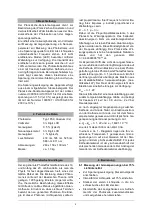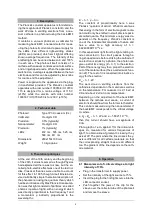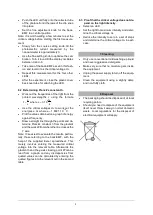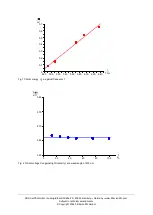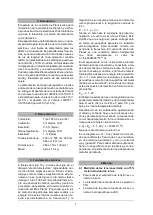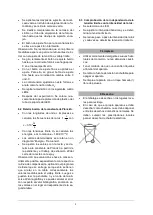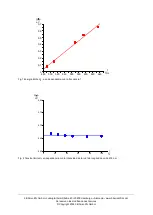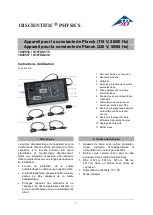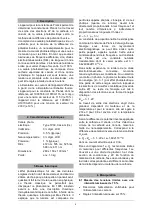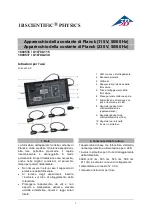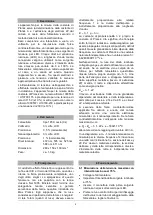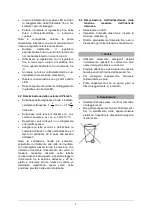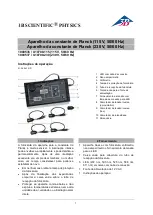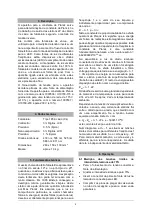
3
Push the LED unit fully onto the collector tube
of the photocell until the jaws of the clip snap
into place.
Set the fine adjustment knob for the back-
EMF to a central position.
Note: it is worth waiting a few minutes to set the
critical voltage before starting the first measure-
ment.
Slowly turn the coarse setting knob till the
photoelectric current measured by the
nanoammeter is approximately 0.
Use the fine setting knob to optimise the cali-
bration. Turn it round till the display oscillates
between 0 and -0.
Take note of the back-EMF as set in this fash-
ion and record it as the critical voltage
U
0
.
Repeat this measurement for the four other
LEDs.
After the experiment, close the plastic cover
back over tube for attaching the LED.
6.2 Determining Planck’s constant
h
.
Work out the frequencies of the light from the
printed wavelengths
using the formula
c
f
where
8
m
3 10
s
c
.
Use the critical voltages
U
0
to work out the
energies
0
e U
where
19
1.6021 10 C
e
.
Plot the values obtained on a graph of energy
against frequency.
Draw a straight line through the points and de-
termine Planck’s constant
h
from the gradient
and the work
W
from where the line crosses the
Y axis.
Note: It is easiest to evaluate the results, particu-
larly those referring to the back-EMF, with the
help of the supplied Excel spreadsheet. This
merely involves entering the measured critical
voltage into the relevant table. Afterwards the
gradient
h
and the y-axis crossing point
W
can be
read from a graph and any discrepancies from
quoted values can be calculated by entering the
quoted figures into the relevant cell in the second
table.
6.3 Proof that the critical voltage does not de-
pend on the light intensity.
Select an LED.
Set the light to maximum intensity and deter-
mine the critical voltage
U
0
.
Reduce the intensity to zero in a set of steps
and determine the critical voltage
U
0
in each
case.
7. Cleaning
Only use conventional mild washing-up liquid
and never aggressive detergents.
Make very sure that no moisture gets inside
the equipment.
Unplug the power supply to turn off the equip-
ment.
Clean the equipment using a slightly damp
and non-fluffy cloth.
8. Disposal
The packaging should be disposed of at local
recycling points.
Should you need to dispose of the equipment
itself, never throw it away in normal domestic
waste. Local regulations for the disposal of
electrical equipment will apply.


